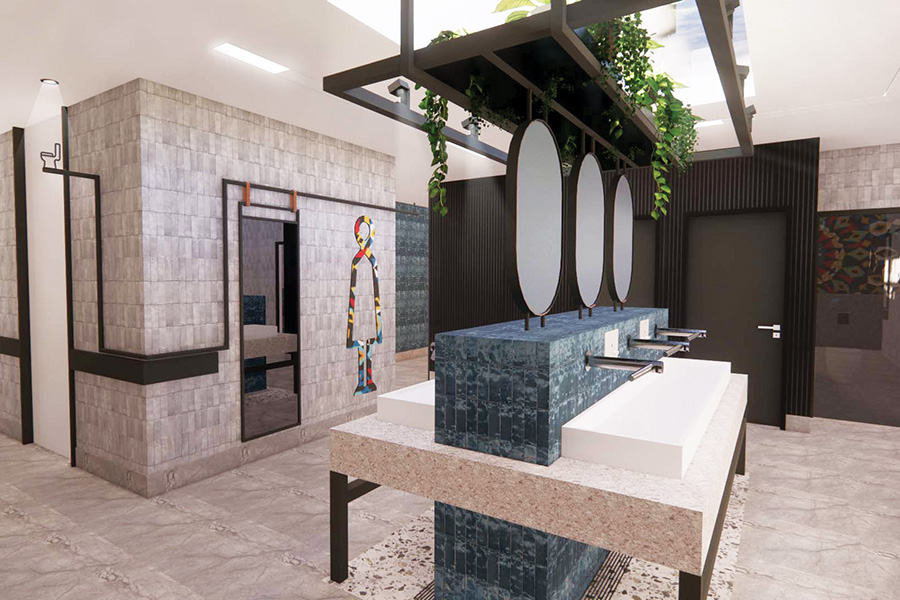This article by Kelvin Taylor, Project Director, Associate at Diadem was featured in the latest issue of Shopping Centre News – Mini Guns 2022 edition.

Inclusive design is human-centred design. The Centre for Inclusive Design (CFID) expands this to consider the full range of human diversity, including ability, language, culture, gender, age and other forms of human difference, as part of the design process.
Most individuals have an inherent diversity from the average in terms of their needs or goals. While many retailers and brands focus on defining and catering for their target market and aligning goods and services with their optimal audience, the reality is they cannot control who enters their physical stores or chooses to shop online. When it comes to designing for diversity and inclusiveness, a one-size-fits-all solution does not work. Real inclusion is achieved when a single solution provides for the total scope of human differences. It’s more of a one-size-fits-one paradigm.
Research evidence supports that companies that prioritise diversity and inclusion not only makes them more thoughtful in their outlook but has the ability to enhance user perception and positive feelings associated with the brand. Millennials, in particular, are more likely to choose a brand that demonstrates diversity and inclusion with respect to products and promotion.
The CFID references a Deloitte Global Marketing Trends 2021 report that noted, “when a brand connects on a humane, empathic level, people are more open to trusting the intentions of the brand and believe that their needs are truly being met”.
Evidence suggests companies with a strong purpose are trusted by consumers more than those with a weaker one.
Translating the model of an inclusive brand position into a retail setting can be complex. Turning policy into action is where it matters most. The brand promise must be represented in the store experience and consider all customer touchpoints. A tangible example of turning ideas into action is UK supermarket chain Morrisons which introduced a ‘quiet hour’ in support of the National Autistic Society.
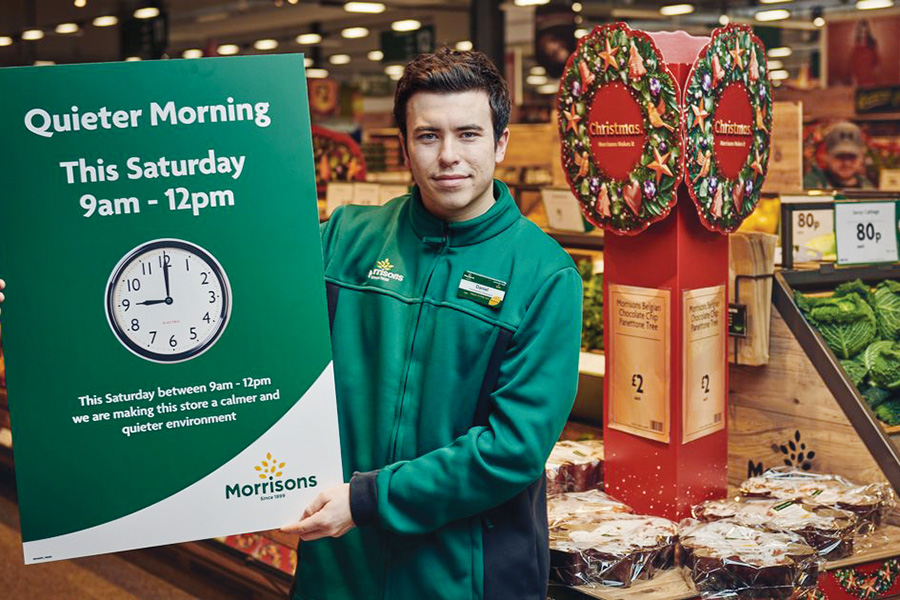
Morrisons Quiet Morning
During quiet hours, the stores dimmed the lights, turned off the radio and music, avoided loudspeaker announcements, turned down checkout beeps and scanners, reduced trolley movements and introduced signage.
Locally, both Woolworths and Coles have run quiet hours across their stores in support of Life without Barriers and Autism Spectrum Australia (Aspect), respectively. Coles is looking to offer quiet hours across all eligible stores by 2023, while Woolworths Group has continually been ranked as Australia’s top company in the Asia Pacific Diversity and Inclusion Index.
Fashion brands The Iconic and Bonds have both embraced diversity in their product promotion, most noticeably in the employment of models that encompass a broad range of sizes, cultural backgrounds and differently-abled people. In 2020, Bonds launched a new diversity campaign for its Retro Rib range and has also collaborated on a Pride collection to celebrate the LGTBQIA+ community and has produced genderless garments.
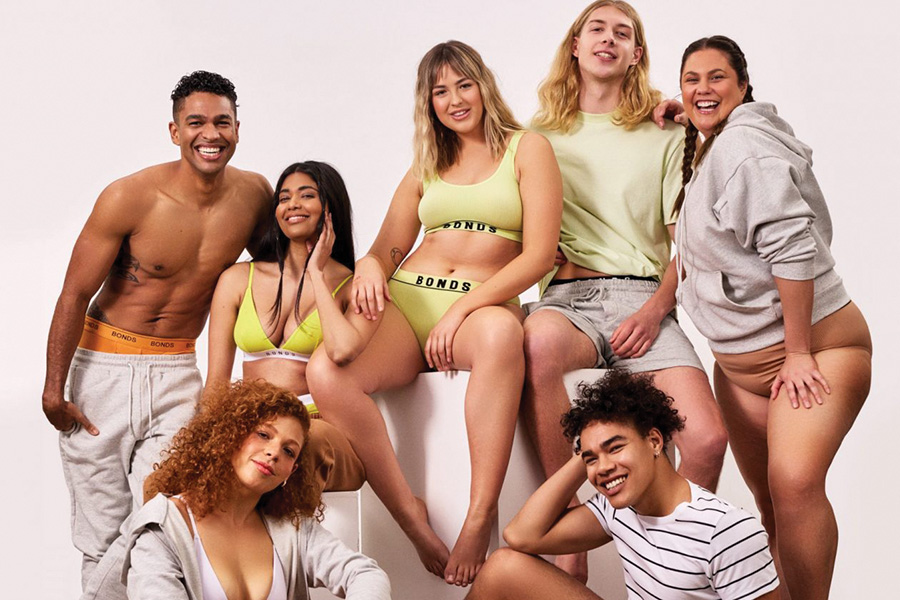
Bonds embraces diversity in its campaigns
Ageism in the workplace is another area where the principles of diversity and inclusion are tested. People with years of experience and skills are often overlooked. Bunnings is a great example of an Aussie icon hiring mature workers and providing opportunities as well as hosting activities that directly help the wellbeing of older members of the community. Harris Farm is another retailer achieving diversity through its hiring by prioritising the recruitment of people with disabilities and understanding the value they bring to the business. Their goal is to hire at least one person with a disability in each of their stores. Leading organisations are also undertaking diversity training to increase participants’ cultural awareness, knowledge and communication skills. Diversity training can benefit an organisation by promoting better teamwork and helping employees recognise and be tolerant of differences between co-workers.
It’s not just about physical differences. A concept increasing in awareness is that of ’neurodiversity’ that normalises the differences of brain functions and behaviour traits in society. Many people with neurological conditions such as autism spectrum disorder and dyslexia have extraordinary skills, including in pattern recognition, memory, and mathematics. Yet they often struggle to fit the profiles sought by employers.
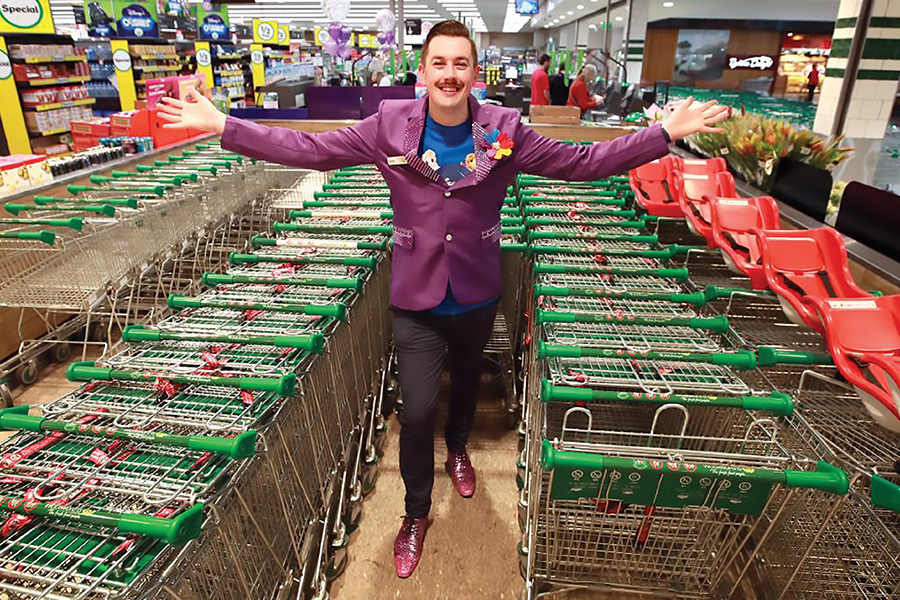
Wear it purple day
Leading companies are reforming their HR processes in order to access neurodiverse talent – and are seeing productivity gains, quality improvement boosts in innovative capabilities and increased employee engagement.
Designing inclusive environments is another key area. When activating inclusive initiatives, it is important to understand that accessibility does not mean inclusion.
While providing accessible environments is fundamental to a physical space, when people are treated differently from the norm, even in a considered way, they may not feel truly included. Inclusion is not necessarily achieved by providing access. Inclusive design aims to remove barriers and enable everyone to participate equally, confidently and independently. By designing and managing the built environment inclusively, the frustration and hardship experienced by many can be overcome.
An example of an Australian retail focus on designing inclusive environments is Stockland. Its FY21 ESG Review has established a clear strategy for achieving inclusive and accessible living with a set of FY22–24 targets. Activities to support these goals include improved customer experience for people with disabilities, benchmarking dignity, equity and inclusion compliance, delivering sensory maps and wayfinding to enhance the shopping experience and improving access to skills, training and pathways for sustained livelihoods.
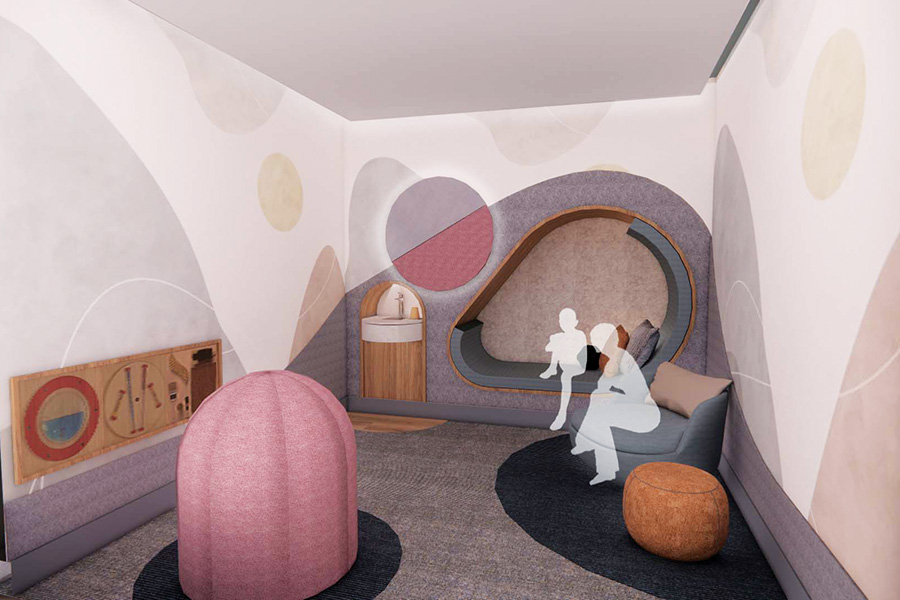
Quiet Room, Stockland Wetherill Park
At Stockland Wetherill Park, this is coming to life through the design of inclusive and gender-neutral amenities that house communal hand wash, parent and child feeding rooms, kitchenette, changing places, quiet and prayer rooms. Through innovative design, Stockland is catering for all genders, all ages and all cultures.
There is definitely an increase in brands endeavouring towards inclusion and diversity. This benefits society and is positive for business. Designers, companies and government all have a role to play by designing, investing and legislating with difference in mind. In this way, a design process that is inclusive will become standard practice.
Designing with differences in mind does not limit commercial potential; rather, it increases it – to end users, suppliers and designers alike.


